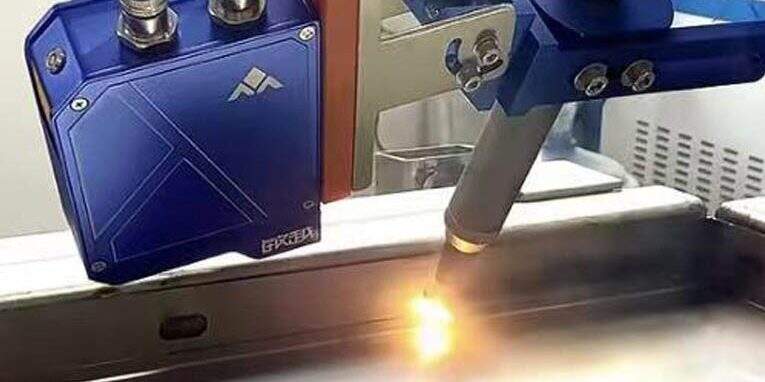
¿Qué son los sistemas de monitoreo del soldadura láser? Sistema de monitoreo visual, acústico, óptico, señal eléctrica
La tecnología de soldadura láser es una tecnología avanzada que utiliza un haz láser de alta energía para soldar materiales. Tiene las ventajas de alta precisión, alta velocidad y baja deformación, y se utiliza ampliamente en la fabricación de automóviles, aeroespacial, industria electrónica y otros campos. Con el desarrollo continuo de la fabricación inteligente, los requisitos de calidad y eficiencia de soldadura siguen aumentando, y surge el sistema de monitoreo de soldadura láser, proporcionando una garantía confiable para la estabilidad y calidad del proceso de soldadura.
Tipos de sistemas de monitoreo de soldadura láser
Los sistemas de monitoreo de soldadura láser se dividen principalmente en los siguientes tipos:
Sistema de monitoreo visual: Utiliza cámaras y tecnología de procesamiento de imágenes para monitorear el proceso de soldadura en tiempo real e identificar defectos de soldadura y fenómenos indeseables.
Sistema de monitoreo acústico: Al analizar las señales acústicas generadas durante el proceso de soldadura, se pueden identificar rápidamente defectos de soldadura, como soldaduras irregulares, grietas, etc.
Sistema de monitoreo óptico: Utilizando el fenómeno de dispersión y reflexión láser, se puede monitorear la distribución de temperatura en la zona de soldadura y el estado de la poza de soldadura para garantizar la calidad del proceso de soldadura.
Sistema de monitoreo de señales eléctricas: al monitorear la corriente y el voltaje de soldadura, se pueden detectar a tiempo situaciones anormales durante el proceso de soldadura, como la inestabilidad del arco.
Sistema de monitoreo visual
1. Cómo funciona
El sistema de monitoreo visual se basa principalmente en cámaras de alta resolución para capturar imágenes en tiempo real de la zona de soldadura, y analiza diversos fenómenos en el proceso de soldadura, como la forma de la soldadura y los defectos, mediante algoritmos de procesamiento de imágenes. El sistema generalmente incluye una cámara, una fuente de luz, una unidad de procesamiento de imágenes y software de monitoreo.
2. Funciones principales
Las funciones principales del sistema de monitoreo de visión en la soldadura láser incluyen:
Monitoreo en tiempo real: captura en tiempo real de imágenes del proceso de soldadura, monitoreando el estado de la soldadura.
Detección de defectos: identificar los defectos visuales que pueden ocurrir durante la soldadura.
Rastro de soldadura: rastrear la trayectoria de soldadura para asegurar que la antorcha se mueva por la ruta correcta.
Registro y análisis de datos: registrar imágenes y datos durante el proceso de soldadura para un posterior análisis y control de calidad.
3. Ejemplos de aplicaciones
El sistema de monitoreo visual tiene una amplia gama de aplicaciones prácticas. Por ejemplo, en la fabricación de automóviles, los sistemas de monitoreo visual pueden supervisar el proceso de soldadura del chasis para garantizar la consistencia de la calidad de la soldadura; En la industria electrónica, el sistema puede usarse para soldadura precisa, como la soldadura de baterías de teléfonos móviles, para asegurar la precisión y fiabilidad de la soldadura.
Tendencia de desarrollo futuro
La aplicación del sistema de monitoreo de visión en la soldadura láser seguirá expandiéndose y profundizándose, y las principales tendencias de desarrollo en el futuro son las siguientes
Inteligente: Combinado con tecnología de inteligencia artificial, para lograr la identificación y diagnóstico automático de defectos de soldadura, mejorando el nivel de inteligencia del sistema de monitoreo.
Fusión multisensor: Integrar diversas tecnologías de sensores, como señales acústicas, ópticas y eléctricas, para lograr un monitoreo de soldadura multidimensional y mejorar la precisión y fiabilidad del monitoreo.
Análisis de datos y retroalimentación: Utilizar tecnología de análisis de grandes datos de IA para analizar los datos en el proceso de soldadura en tiempo real, proporcionar retroalimentación y sugerencias, y optimizar el proceso de soldadura.
El sistema de monitoreo visual desempeña un papel vital en el monitoreo del soldado láser. A través del monitoreo en tiempo real y el análisis inteligente, se mejora eficazmente la calidad del soldadura y la eficiencia de producción. Con el avance continuo de la tecnología, el sistema de monitoreo visual se desarrollará en dirección a una mayor inteligencia e integración, y proporcionará un apoyo técnico integral para la fabricación inteligente.